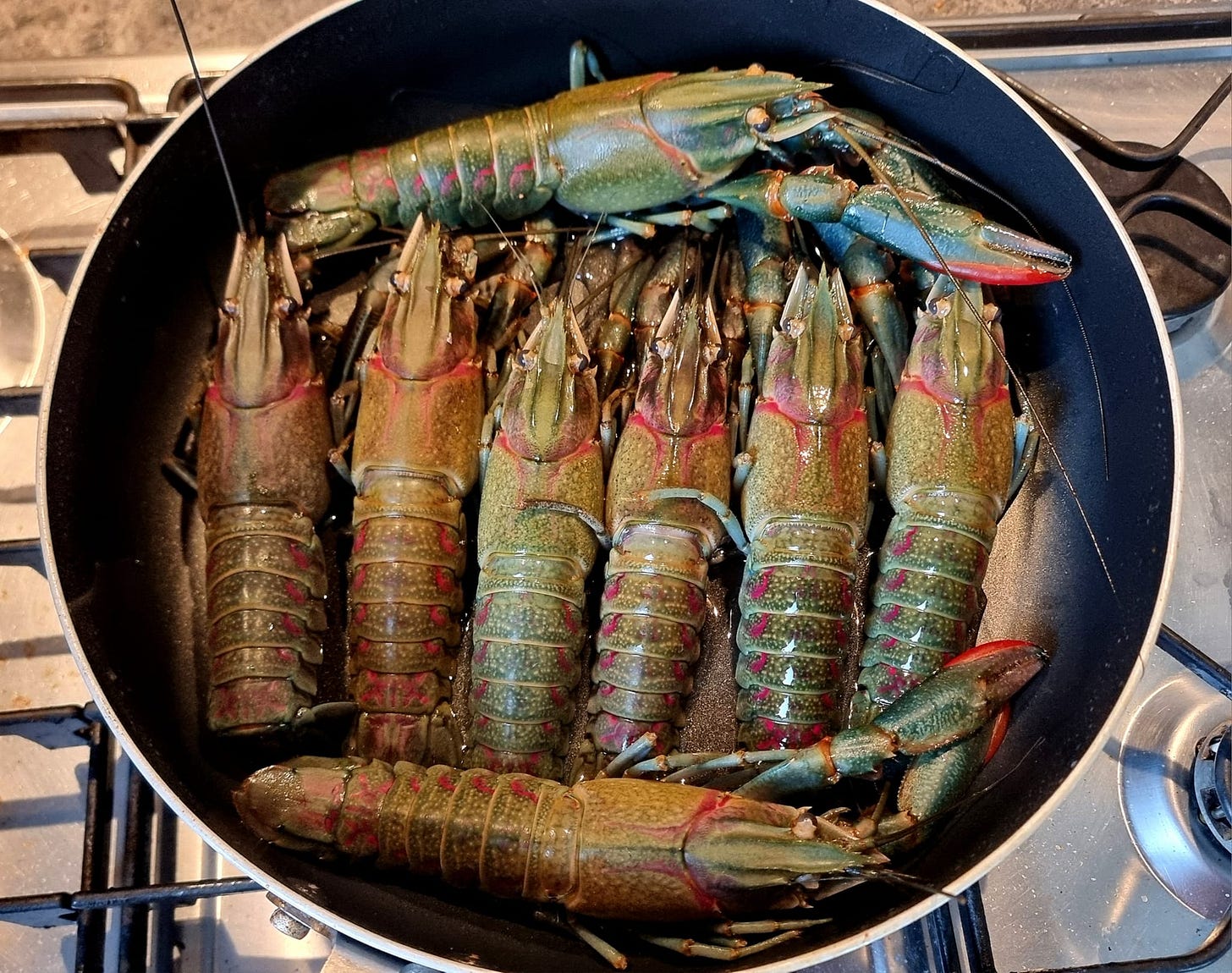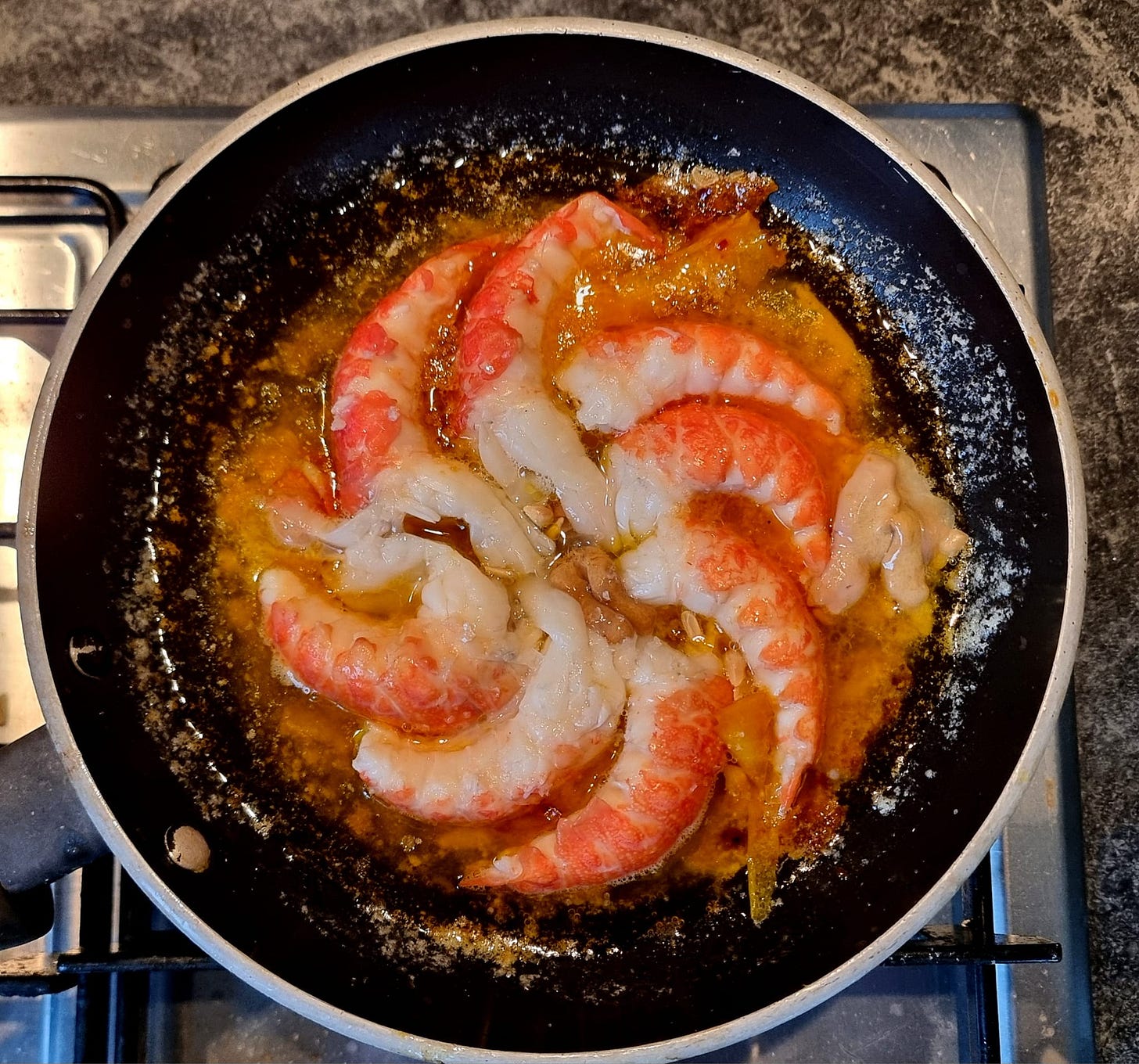Yabbies (Cherax Destructor) are native to Australia and related to crayfish, crabs, lobsters, prawns and shrimp. They live in creeks, dams, rivers, backwaters and lakes to the west of the Great Dividing Range. I use the term "Yabby" to refer to a variety of species - sort of like an affectionate nickname.
The name is derived from the word yabba which is what they were called by the Aboriginal people who lived along the Murrumbidgee River. The second longest river in Australia, it is a major tributary of the Murray River. In other areas they were known as “yabber” or “yabij”.
I grew up on the Murray River and "going yabbying" was a favourite spring and summer activity. It was not unusual for me to come home from work and find the bathtub full of yabbies and preparations for a feast well underway.
On another occasion, on the outskirts of Canberra, my partner and I showed friends how to catch the prized food. We fashioned a bucket from metal scraps we found in the shed, tied in a little meat and then tossed the bucket into the dam. Our reward was at least 50 little yabbies. After they were cooked, an American visitor insisted on lining the now reddish-orange catch in rows on the verandah to photograph them - he, like all the others were fascinated and subsequently enthralled by the sweet tail meat. The claws don't contain much meat.
Spring and summer are the best times to catch yabbies, but it is possible to catch them in winter too. One of the greatest traits of yabbies is their ability to survive through super dry conditions, including prolonged droughts. When their waterway dries up they will often burrow into the mud, digging down deeper and deeper as the drought drags on. Once the rain returns and the waterway fills back up, the yabbies will come back out of their holes and move freely around the water again. The water you catch the yabbies in is the best water to store them in.
Yabbies are an important dietary item for Platypus, water birds and Australian native freshwater fish such as Murray Cod and Golden Perch.
Some years ago I investigated growing yabbies. We had a large intermittent water course which I wanted to dam on our property inland from Coffs Harbour on the mid north coast of New South Wales. Neighbouring properties had stocked their dams with fingerlings. After the fingerlings grew local kids would sneak over with their fishing rods ;-)
Ultimately my research into farming the delicacy came to a screeching halt when I realised that after allowing for a spillway the size of the dam would be much reduced plus the dam wall may not hold with the volume of water in the wet season (around 1700mm per annum). So I turned my attention to snail farming (but that's another story all together).
There is a yabby farm on Kangaroo Island off the coast of South Australia where they produce Australian Marron (Cherax Cainii), the third largest fresh water crayfish in the world.
But by far the most extensive system I have seen is the Australian Sweetwater Crays farm in Queensland's Scenic Rim. The yabbies they farm are Red claw (Cherax quadricarinatus) a freshwater crayfish native to Northern Australia and found in most waterways throughout Queensland. Construction of the first ponds began during Co-Vid - a positive outcome during lock down.
Above: Australian Sweetwater Crays Red Claw
The most humane and easiest method of killing any crustacean is to chill it in the freezer for 15 minutes so they enter a state of hibernation (but do not leave them there long enough to freeze them).
- Bring salted water to the boil. (sea water is best).
- Cook for 6-8 minutes, until red and floating.
- Place in iced water to cool, then after a couple of minutes, peel and enjoy.
Although there are a number of recipes available online my most favourite way to enjoy them is simply lightly steamed and then sauteed in garlic butter with Lemon Aspen Sea Salt.
And let nothing go to waste. Crayfish heads make a wonderful stock which can then be turned into a bisque, chowder, seafood pie, or use it to add extra flavour to our curries or sauces.





